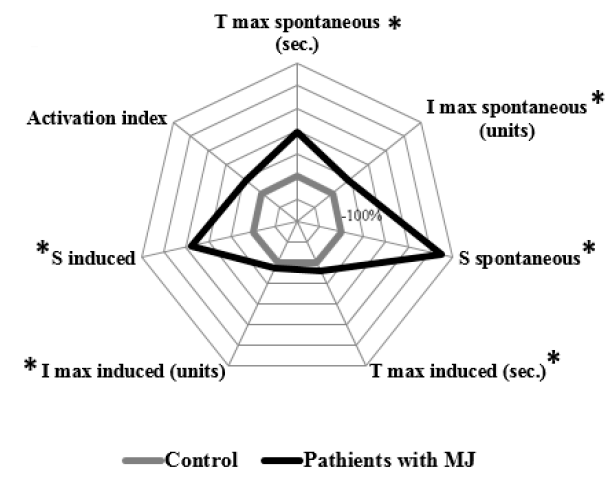Neutrophils’ functional activity in patients with mechanical jaundice and different levels of bilirubin
DOI:
https://doi.org/10.15419/bmrat.v8i6.679Keywords:
Bilirubin, chemiluminescence, mechanical jaundice, neutrophilsAbstract
Introduction: Mechanical jaundice (MJ) or bile duct blockage occurs when the bile ducts' patency is impaired, and the bile flow has stopped. One of the main pathogenetic factors developing complications with MJ is immune system imbalance, particularly its phagocytic link. The purpose of the study was to understand neutrophils' functional activity dependence with different blood bilirubin levels in men with mechanical jaundice.
Methods: Forty-seven middle-aged men with mechanical jaundice were divided into three groups depending on the bilirubin levels in their blood: less than 60 μmol/L (n = 10), 60 – 200 μmol/L (n = 20), and more than 200 μmol/L (n = 17). The control group consisted of 50 practically healthy men of the same age. The neutrophils' functional state was assessed using the methods of spontaneous and induced luminol-dependent chemiluminescence of neutrophils.
Results: In the group of patients with mechanical jaundice and a bilirubin level of less than 60 μmol/L, there was an increase in the values of T max spontaneous by 96%, I max spontaneous by 44.81%, S spontaneous by 224.6%, T max induced by 19.9%, I max induced by 13.5%, and S induced by 140.3%. In the group with bilirubin levels from 60 – 200 μmol/L, there was an increase in the values of T max spontaneous by 86.8%, I max spontaneous at 47.7%, S spontaneous at 204.6%, I max induced at 28.3%, S induced at 445%, and activation index at 70%. The group with bilirubin levels more than 200 μmol/L showed an increase in the level of T max spontaneous by 85.9%, I max spontaneous by 53.4%, S spontaneous by 927.3%, I max induced by 28.6%, S induced by 1045%, and activation index by 92.3% compared with the control values. The intergroup differences were found in S spontaneous levels, which were higher in the group with more than 200 μmol/L bilirubin levels compared with the 60 – 200 μmol/L group and less than the 60 μmol/L groups by 216.9% and 237.3% respectively.
Conclusion: The revealed changes characterize the functional activity of neutrophils' increase with an increase in the bilirubin levels in patients with mechanical jaundice.

Downloads
Published
Issue
Section
License
Copyright The Author(s) 2017. This article is published with open access by BioMedPress. This article is distributed under the terms of the Creative Commons Attribution License (CC-BY 4.0) which permits any use, distribution, and reproduction in any medium, provided the original author(s) and the source are credited.
